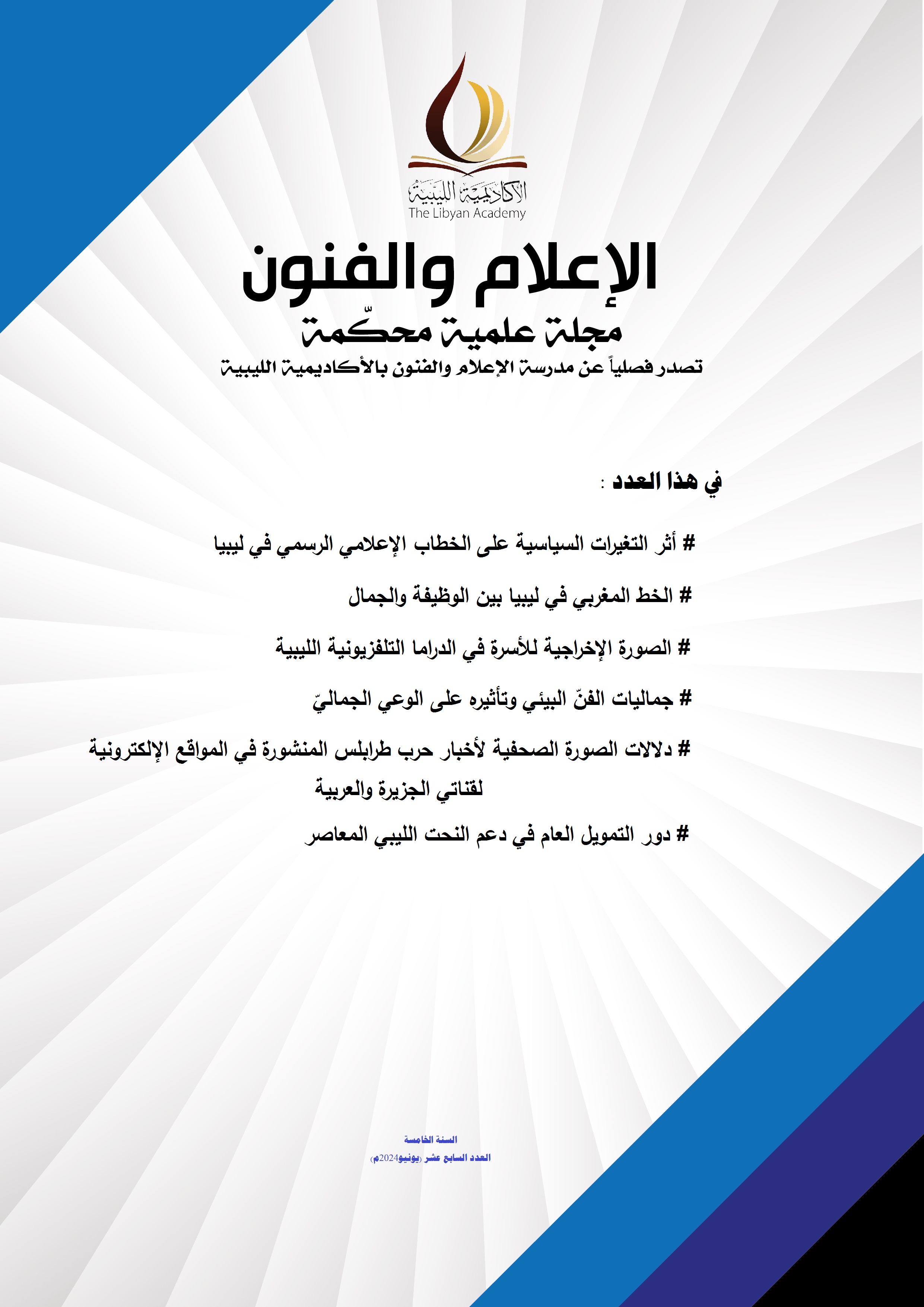الخط المغربي في ليبيا بين الوظيفة والجمال
Main Article Content
Abstract
Abstract
This research dealt with the process of Moroccan calligraphy in Libya, moving from the functional aspect to the aesthetic aspect. The research problem was represented in the following question: What are the functional and aesthetic aspects that Moroccan calligraphy carries in Libya? Western calligraphy was also reviewed in general, its history, origins, stages of development, as well as its plastic and aesthetic characteristics. Then he touched on the journey of the Moroccan calligraphy in Libya in terms of its types and use during the period of the existence of this script, as the Moroccan bast calligraphy was used in writing the Qur’an, and the jeweled calligraphy was used in writing titles and documents, and the Musnad and Zamami in documents and in writing contracts. Then he touched on the return of Moroccan calligraphy to the field again at the hands of new artists Those who excelled in it and some of them obtained licenses in the simple script, and the entry of the Moroccan letter into the cursive plastic painting as an aesthetic, formative and semantic element. The research concluded with a set of results represented in: - The fonts that affect the Libyan identity and the most widely used of the Moroccan scripts are the simple script and the jeweled script. - The Moroccan bassu script was specialized in writing the Qur’an in Libya, while the Moroccan jeweled script was used for other purposes of manuscripts and documents. - The Moroccan script entered cursive fine art in the contemporary period as an aesthetic element in some of the works of new artists. - The use of the Moroccan and the Levantine script coincided during the period of rule of the Ottoman Empire, so the Levantine script was limited to official state departments, while the Moroccan script continued to be used in religious teachings and private transactions, for the most part. Especially areas far from official state
Opening Words: Moroccan calligraphy, functional and aesthetic, letter painting

